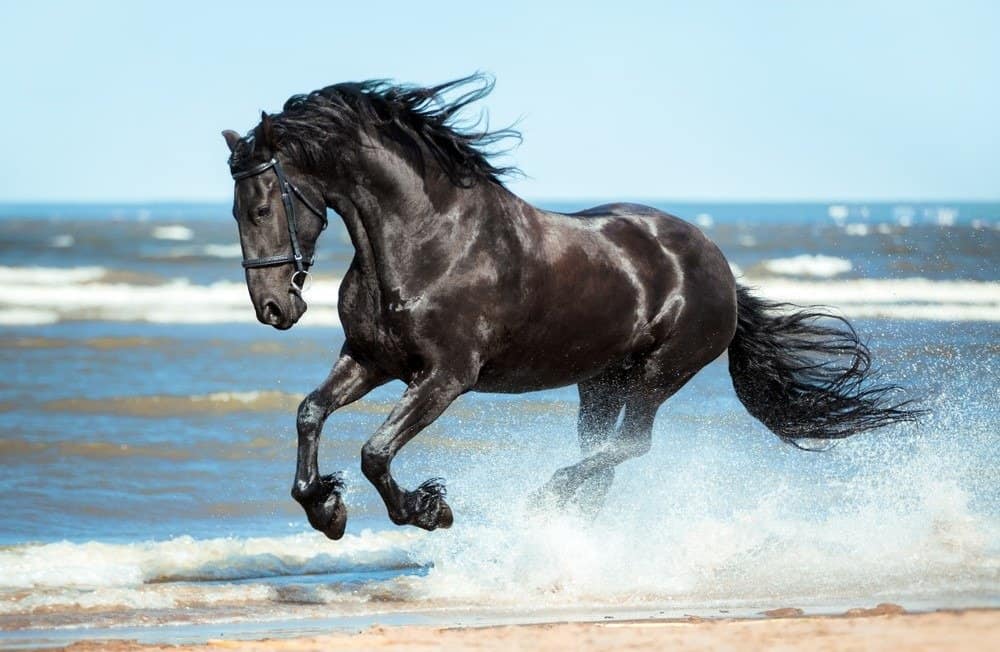
Semen production is a complex and essential process for the reproductive success of many mammals, including horses. Understanding the amount of semen a horse produces during ejaculation is crucial for horse breeders and veterinarians to ensure successful breeding and reproduction. While the average amount of semen produced by a stallion during ejaculation is around 30 to 100 milliliters, several factors can affect this amount, including the age and health of the horse, the frequency of ejaculation, and the quality of the semen. In this article, we will explore the factors that influence the amount of semen a horse ejaculates and why it’s essential to consider the quality of the semen for successful breeding.

How Much Semen Does A Horse Ejaculate?
Horses, like most male mammals, produce semen that contains sperm and other substances necessary for fertilization. The amount of semen a horse ejaculates can vary depending on several factors, including the age of the stallion, the frequency of ejaculation, and the health and fertility of the animal.
On average, a mature stallion can produce between 30 to 100 milliliters of semen per ejaculation. However, it’s worth noting that the amount can vary greatly depending on several factors, including the breed of the horse, the size of the animal, and the frequency of ejaculation.
Younger stallions may produce less semen compared to older and more experienced stallions. This is because they are still developing and have not yet reached sexual maturity. Additionally, the frequency of ejaculation can also affect the amount of semen produced. Stallions that ejaculate more frequently may produce less semen compared to those that ejaculate less frequently.
Another factor that can affect the amount of semen a horse produces is their overall health and fertility. Horses that are ill or have reproductive problems may produce less semen than healthy horses. This is because semen production is a complex process that requires the proper functioning of several reproductive organs, including the testicles, epididymis, and prostate gland.
It’s worth noting that while the amount of semen a horse produces is important, it’s not the only factor that determines their fertility. The quality of the semen, including the number, motility, and morphology of the sperm, is also crucial for successful fertilization.
In addition to the amount of semen produced, stallions also have different ejaculation patterns. Some stallions may produce a single large ejaculation, while others may produce multiple smaller ejaculations during a single breeding session. This can also affect the total amount of semen produced.
Overall, the amount of semen a horse ejaculates can vary greatly depending on several factors, including the age of the stallion, the frequency of ejaculation, and the health and fertility of the animal. While the average amount is around 30 to 100 milliliters, it’s important to remember that the quality of the semen is just as important for successful fertilization. Horse breeders and veterinarians often work closely together to ensure that stallions are healthy, fertile, and capable of producing high-quality semen for breeding purposes.
What animal produces the largest amount of sperm?
The animal that produces the largest amount of sperm is actually not a mammal, but a species of fish called the anglerfish. The male anglerfish is much smaller than the female, and once it finds a mate, it latches onto her and releases an enzyme that fuses its body with hers. The male then degenerates, leaving behind just his testes, which release sperm continuously into the female’s bloodstream. The female anglerfish can have several males attached to her, and collectively, they can produce up to several hundred times more sperm than any other known species relative to their body size. This unique reproductive strategy has evolved as a way for the male anglerfish to ensure that his sperm reaches the female’s eggs and fertilizes them, despite the challenges of finding a mate in the deep ocean.
What mammal produces the largest amount of sperm?
The mammal that produces the largest amount of sperm relative to its body size is the common shrew, also known as the Eurasian shrew. These small mammals, which are found throughout Europe and Asia, weigh only a few grams but can produce up to 50% of their body weight in testes. This allows them to produce an impressive amount of sperm, estimated to be around 800 billion sperm per gram of testes. This high sperm production is thought to be related to the intense competition for mating opportunities among male shrews, as females mate frequently and with multiple males. Male shrews have evolved larger testes and produce more sperm to increase their chances of fertilizing the female’s eggs and passing on their genes to the next generation. It’s worth noting, however, that in absolute terms, larger mammals such as elephants and whales can produce a much greater total volume of semen, but relative to their body size, their sperm production is not as impressive as that of the common shrew.
The mammal that produces the largest amount of sperm by volume is the common bottlenose dolphin. These marine mammals, found in oceans all around the world, are known to produce copious amounts of semen, with a typical ejaculation volume of around 12 to 20 milliliters. However, some male dolphins have been reported to produce up to 5 liters of semen in a single ejaculation. This is likely due to the need to ensure successful fertilization in the challenging underwater environment where dilution of sperm can occur rapidly. Additionally, male dolphins engage in a behavior known as “mate guarding,” where they follow a female closely and try to prevent other males from mating with her. This behavior requires the male to produce large amounts of semen to increase the chances of successful fertilization when mating opportunities arise.
Can You Buy Chinchillas In Australia?
Why Does My Poop Smell Like Cat Pee?
Why Do Cats Clean Themselves In Front Of You?
How Much Caffeine Does It Take To Kill An Elephant?
What Does Dreaming Of Copper Head Snakes Mean?
